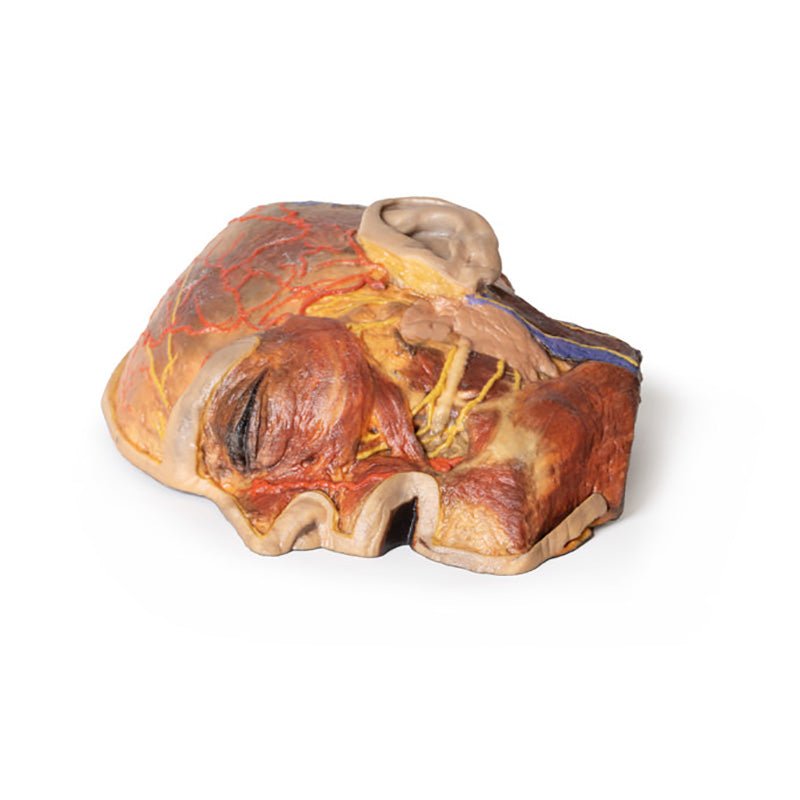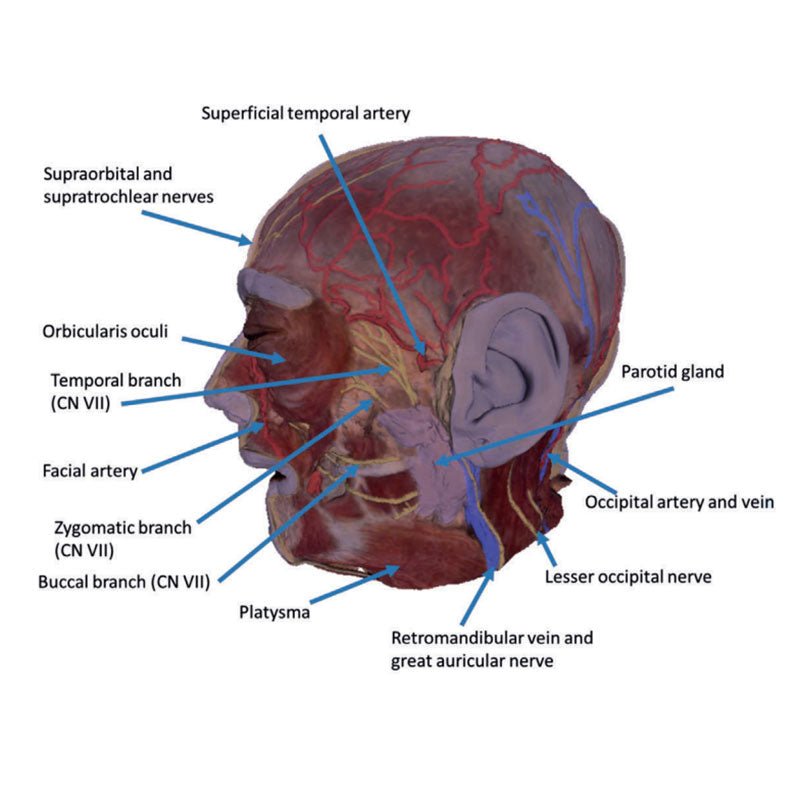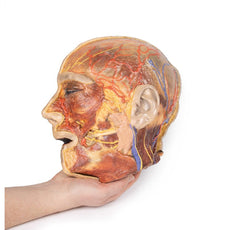Your shopping cart is empty.
3D Printed Superficial Facial Nerves & Parotid Gland
Item # MP1109Need an estimate?
Click Add To Quote

-
by
A trusted GT partner -
FREE Shipping
U.S. Contiguous States Only -
3D Printed Model
from a real specimen -
Gov't pricing
Available upon request
3D Printed Superficial Facial Nerves & Parotid Gland
This 3D model presents the superficial anatomy of the face and head, and compliments the superficial facial anatomy
of our HW 44 model with a more expanded dissection across the scalp and occipital regions.
The superficial
neurovascular and muscular structures in the face largely mirror the structures described in reference to our HW 44
specimen (see description), although the terminal branches of the facial nerve (CNVII) can be largely followed
across a longer course from the parotid gland and the platysma muscle has been retained superficial to the mandible
and extends towards the neck.
In contrast to the HW 44 specimen, this model has a more expansive superficial
dissection inferior to the external ear and across the posterior scalp and occipital region. This allows for an
expanded appreciation of the neurovascular distribution of the supraorbital and supratrochlear nerves and arties
with the superficial temporal artery. Inferior to the ear, the retromandibular vein has been exposed with the
ascending fibres of the great auricular nerve on its superficial surface (and further branches of this nerve on the
surface of the sternocleidomastoid muscle). At the posterior border of the sternocleidomastoid muscle the lesser
occipital nerve is just preserved, near the exiting and ascension of the occipital artery and vein near the
trapezius muscle towards the posterior scalp. Surrounding the external ear are fibres of the auricularis superior
and posterior muscles. Near the margin of the dissection window posteriorly the deep fibres of the occiptalis muscle
can be seen integrated into the epicranius (occipitofrontalis) muscle.
 Handling Guidelines for 3D Printed Models
Handling Guidelines for 3D Printed Models
GTSimulators by Global Technologies
Erler Zimmer Authorized Dealer
The models are very detailed and delicate. With normal production machines you cannot realize such details like shown in these models.
The printer used is a color-plastic printer. This is the most suitable printer for these models.
The plastic material is already the best and most suitable material for these prints. (The other option would be a kind of gypsum, but this is way more fragile. You even cannot get them out of the printer without breaking them).The huge advantage of the prints is that they are very realistic as the data is coming from real human specimen. Nothing is shaped or stylized.
The users have to handle these prints with utmost care. They are not made for touching or bending any thin nerves, arteries, vessels etc. The 3D printed models should sit on a table and just rotated at the table.









































































